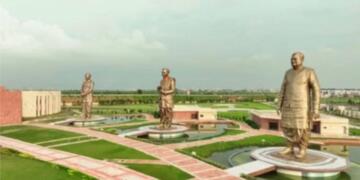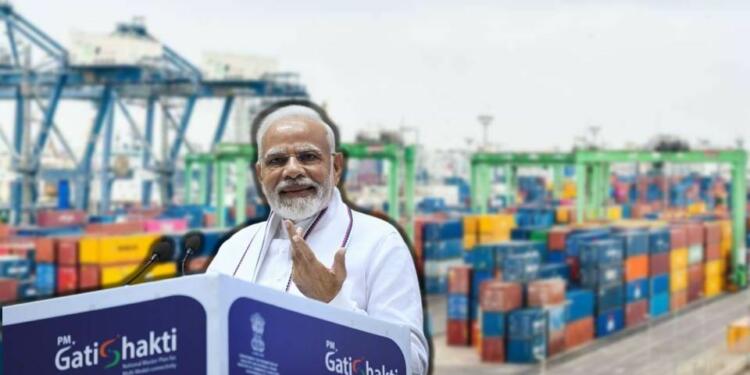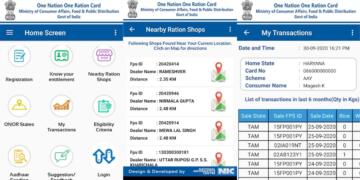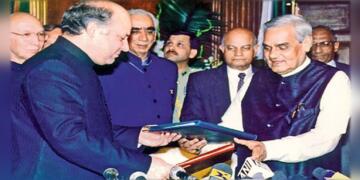Substance vs. Style has been a debate dominating editorial boards of newsrooms. In every newsroom, people advocating for substantive news are less in numbers. Additionally, news not having less substance brings more TRPs. This is the reason why Namibian Cheetahs coming to India hogged more limelight than the National Logistic Policy.
National Logistic Policy
On his birthday, PM Modi handed over a game-changing gift to the nation. This gift is termed as National Logistic Policy, which is aimed at increasing the competitiveness of made-in-India products. PM Modi revealed that it took eight years for his government to chalk out the fine prints of the policy. Talking about his personal contribution to the Policy, PM Modi said that this policy reflects his 22 years of governance experience.
Speaking on the occasion in Vigyan Bhawan, PM Modi said, “To ensure quick last mile delivery, end transport-related challenges, save time and money of the manufacturers, prevent wastage of the agro-products, concerted efforts were made and one of the manifestations of those efforts is today’s National Logistics Policy”. Emphasising on the immediate needs of the policy, PM Modi added, “the echo of Make in India and India becoming self-reliant is everywhere. India is setting big export targets and is also fulfilling them. The notion that India is emerging as a manufacturing hub, is stabilizing in the mind of the world. If we study the PLI scheme we will find that the world has accepted it”
Much needed change
This kind of policy should have been brought in the initial years of independence. But we lost many years and at least two cycles of demographic dividend advantage. Not this time though.
At the current juncture of time, India has the youngest workforce in the world. While various hurdles regarding jobs and business opportunities are on the verge of elimination, the logistics sector is still a big problem to overcome.
Logistics is basically the management of flow of resources like people, materials, inventory, and equipment from the place of origin to destination. This process includes packaging, warehousing, transport and delivery of raw materials and final goods.
The Logistics sector has 3 main components, warehousing, transportation and supply chains. Unfortunately, all 3 components have not been able to achieve their full potential.
Problem with warehousing
Warehousing, which is storage of goods before loading them on transport vehicles is a highly informal branch of logistics. Despite India’s manufacturing capacity on the rise, we do not have much formal space to store. Nearly 90 per cent of our warehouses have less than 10,000 square feet of space.
At the end of 2021, only 265 million square feet were available for storing India’s produce. Moreover, lots of these spaces are occupied by cold storages for storing grains. Estimates suggest that we will require 483 million sq. feet of land for our warehousing needs by 2026.
Increase in the land prices and multiple checkpoints to acquire them make it difficult to acquire new lands to cater to increasing demand.
Transportation is heavily tilted in favour of land
If somehow the farmers and factory owners are able to protect their produce, their transportation is another hurdle. Indians use land, sea and air, all 3 modes of transport to send their produce from the land of origin to the consuming geography.
But, the big problem is that our road transport is the one which caters to most of these needs. 71 per cent of the country’s freight is handled by road, while only 17.5 per cent and 11.5 per cent are taken care of by rail and waterways respectively.
These figures are nowhere compared to the global standard. For an efficient logistical sector, 25-30 per cent of freight traffic should be handled by road. Railways, being faster means of transport should be handling more than 50 per cent while, rest should be left for waterways.
Our over-dependency on road transport has an inner component. There is too much load on highways, despite consisting of less than 2.5 per cent of total roads, highways handle 40 per cent of the road traffic.
Supply chain crisis
When roads fail to deliver things on schedule, it is unfair to blame the companies who transport the products from one location to another. The blank order books create problems such as labour shortages, equipment availability, and many more.
It ends up creating a vicious cycle of less demand that leads to less supply and vice-versa. Even when the supply starts to catch momentum, companies find it tough to recruit because of the negative sentiment about uneven pay has percolated down the order. This problem was more exacerbated during the pandemic.
Extra spending creates a vicious cycle
Apparently, non-uniformity in the structure of the logistic sector is a big drain on the Indian economy. Varying estimates suggest that the Indian government spends about 14 per cent of GDP in rationalising the way in which our logistic sector operates. Ideally, this percentage should have been 8-9 per cent and in case we lagged, it would have touched 10.
This massive spending is a drain on taxpayers’ money since it might be channelled into government spending on health and education, which yield disproportionately high rates of return on investment. Apparently, an unhealthy and less educated population makes up for an inefficient labour force, resulting in a spiral effect and a burden on the logistics sector itself.
No wonder, India stood at 44th rank in the logistics performance index of the World Bank.
Modi government’s infrastructure push
It is not that the Modi government did not try to change the scenario. In fact, they have been quite proactive around changing the scenarios of the logistic sector in the country. Under the BHARATMALA project, 66,100km of roads are being built in a phased manner.
It has a special category called National Corridor Efficiency Improvement, under which 13,100 km of roads are being constructed. The project also focuses on port connectivity, economic corridor, border roads, Greenfield expressway among others.
While Bharatmala is being used to increase the efficiency of roads, SAGARMALA is the name given to Modi government’s push towards the magic being imparted in the Indian waterways. Under SAGARMALA, 7,517 km of coastline and 14,500 km of potentially navigable waterways are being modernised, mechanised and computerised.
The final aim of the project is to boost merchandise exports of India to $110 billion by 2025. The programme has been quite successful by now, PM Modi too pointed out that the average turnaround time for ships from Indian ports have been reduced to 26 hours from 44.
Impact of Gati Shakti
To integrate various means of transportation under one umbrella, the Modi government launched PM Gati Shakti National Master Plan (PMGS-NMP) in October 2021. Gati Shakti have subsumed Rs 110 lakh crore National Infrastructure Pipeline. Moreover, the scheme envisages building 11 industrial corridors, 2 defence corridors, 200 new airports, heliports, water aerodromes and 2 lakh kilometres of national highway.
This massive infrastructure spending has borne fruits as well. When Nitin Gadkari took on the challenge, India was building the Highways at a meagre pace of 12 km per day. By the end of Financial Year 2021, India tripled its speed and is now building roads at 36.4 km per day.
Gadkari has publicly stated that he plans to take this speed to 100 km per day. Official statistics say that Gadkari has overseen the construction and reconstruction of 1,41,000 km of Highways by the end of 2021.
Hurdles for logistic sector
Despite all these big ticket changes visible on ground, India’s logistic spending is lower than that of its developing counterparts. Compared to India’s 14 per cent, the average logistics spending of BRICS nations is only around 11 per cent.
Apparently, the complex structure of India’s regulatory regime around this sector is the biggest hurdle impacting the efficiency.
The sector comprises of 20 government agencies, 40 PGAs (Partner Government Agencies), 37 export promotion councils, 500 certifications, over 10,000 commodities, and a $ 200 billion market size. It also involves 200 shipping agencies, 36 logistics services, 129 ICDs (Inland Container Depots), 168 CFSs (Container Freight Stations), 50 IT ecosystems, banks and insurance agencies. The web is too much for a sector which is employing only 2.2 lakh people which is, of course, an underachievement.
How will the policy change it?
The new logistic policy aims at streamlining all these processes. It has proposed the creation of Integrated Digital Logistic systems. The single window system will integrate 30 systems belonging to 7 different ministries namely, road transport, railways, customs, aviation, foreign trade and commerce.
Similarly, to monitor smooth cargo movement 17 digital systems from the aforementioned ministries and National Industrial Corridor Development Corporation will be integrated under Unified Logistics Interface Platform. 12 of them have already been integrated.
Institutions such as SYSTEM IMPROVEMENT GROUP (SIG) and EASE OF LOGISTICS (ELOG) are the two other key components of National logistic policy. The responsibility of monitoring and reviewing the implementation of the policy has been handed over to an empowered group of secretaries (EGoS), constituted under the PM Gati Shakti.
The logistics sector in India is one of the country’s economic white elephants. It is expected to nearly double its revenue during the next six years, from 2019 to 2025. The only stumbling block was complicated laws and regulations. The Modi government has taken a revolutionary step in this direction. Let us hope the formula of minimum government, maximum governance bears fruit.
Support TFI:
Support us to strengthen the ‘Right’ ideology of cultural nationalism by purchasing the best quality garments from TFI-STORE.COM
Also Watch:


































